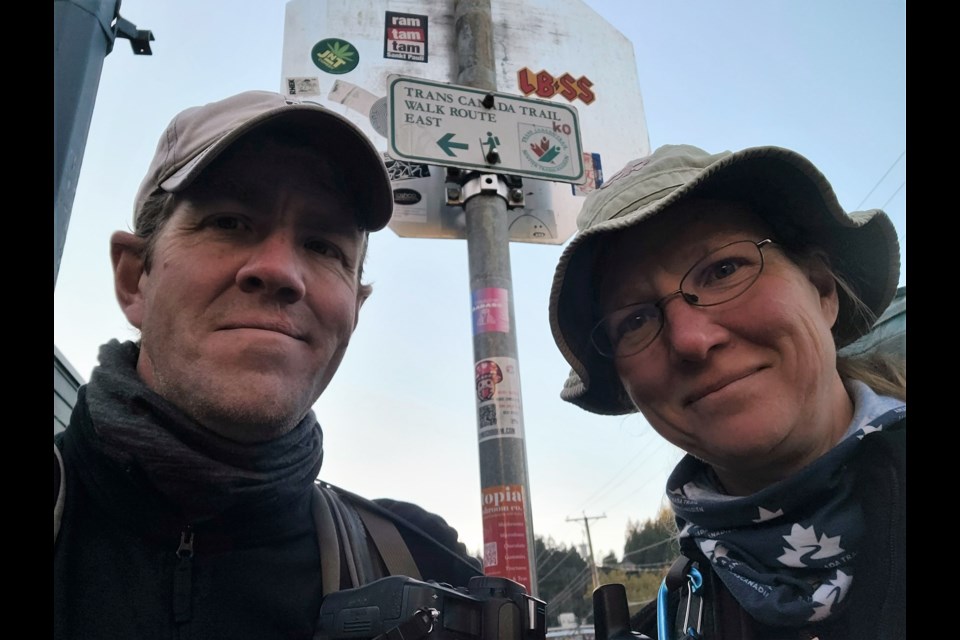One day they got up and walked.
Then, they did it again, and again, and again until,13,716 kilometres later – after walking onto the ferry in Horseshoe Bay – they walked to Clover Point in Victoria, the end of the Trans Canada Trail.
Sonya Richmond and Sean Morton trekked a total of 556 days over four years, starting at Cape Spear, N.L., on their mission to “reconnect people to nature through birds and citizen science.”
They took 750,000 photos of birds, gave almost 100 presentations, and they walked through 10 pairs of shoes and boots and five pairs of sandals each (Morton saved the shoelaces as keepsakes).
On Nov. 24 the pair, joined by family, supporters and members of the Victoria Natural History Society, completed the hike and celebrated with a meal. A day later, they were back in Davis Bay, where Richmond’s parents live, catching up on posts for their award-winning blog.
“We’ve been pretty lazy the last few days. It’s good,” said Richmond.
As news broke, the impact of their accomplishment set in.
People they met over the years on trail reached out to congratulate them – told them they've been using a citizen-science app, or taking their kids on more outdoor adventures.
“Hearing those stories from people that had been inspired to explore nature in their own backyards, I think was one of the most exciting parts of finishing the east-west portion of our trek,” Richmond told Coast Reporter.
The couple have been using social media, their website and in situ presentations to promote their mission. They track species through iNaturalist – an app that uses crowdsourcing to monitor biodiversity in North America.
During winter break they’ll prepare for a new arduous challenge – trekking 3,900 km north from Fort Saskatchewan, just outside Edmonton, to the edge of the Beaufort Sea, Tuktoyaktuk, N.W.T. – a feat they hope to accomplish in one season, starting in the spring.
In the first year, the pair had a sponsorship to help fund the journey. They’ve also received a $5,000 grant from the Royal Canadian Geographic Society – needed, but also a drop in the bucket. Mostly, they’ve relied on individual donations – so while they overwinter, they’ll also be fundraising.
“It’s likely going to be a lot harder and more expensive. The cost of food is so high. So we're gonna have to do things a little bit differently.” said Richmond.
Doing things differently could mean mailing themselves “a lot more” resupply packages. And bracing for bugs. “I've heard horror stories about mosquitoes,” said Richmond. “I may be hiking in a head-to-toe bug suit. But we’ll see how it goes.” She’s allergic.
“See how it goes” is the biggest lesson they’ve learned over their journey. Richmond, who has a PhD in Forestry from the University of Toronto, said before they started they expected to complete the entire circuit in three years. They “had it down to the math.”
“We knew where we were going to stop, we knew what we were going to do. And now it’s – what – four years later and we just did the east-west section. Clearly, you cannot do this by the numbers.”
Her advice for those who want to break a similar trail, is to prepare, yes, but keep expectations in check. “Have a plan. Aim for it. That’s great. But I would guess on day two, it’s going to fall apart, at least for us it did. And you just have to take it from there. Take what comes and enjoy it as much as you can.”



